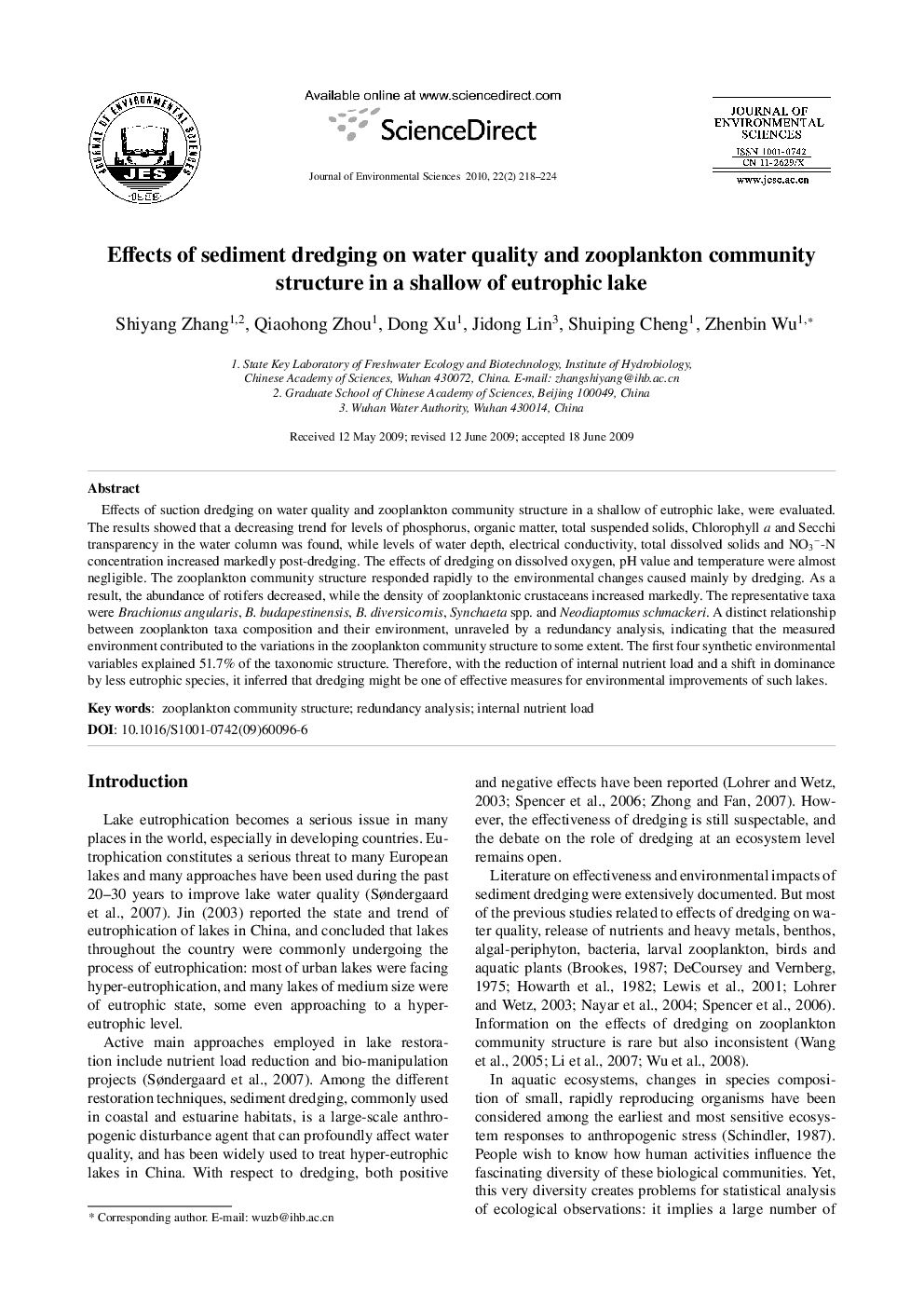| Article ID | Journal | Published Year | Pages | File Type |
|---|---|---|---|---|
| 4456050 | Journal of Environmental Sciences | 2010 | 7 Pages |
Effects of suction dredging on water quality and zooplankton community structure in a shallow of eutrophic lake, were evaluated. The results showed that a decreasing trend for levels of phosphorus, organic matter, total suspended solids, Chlorophyll a and Secchi transparency in the water column was found, while levels of water depth, electrical conductivity, total dissolved solids and NO3−-N concentration increased markedly post-dredging. The effects of dredging on dissolved oxygen, pH value and temperature were almost negligible. The zooplankton community structure responded rapidly to the environmental changes caused mainly by dredging. As a result, the abundance of rotifers decreased, while the density of zooplanktonic crustaceans increased markedly. The representative taxa were Brachionus angularis, B. budapestinensis, B. diversicornis, Synchaeta spp. and Neodiaptomus schmackeri. A distinct relationship between zooplankton taxa composition and their environment, unraveled by a redundancy analysis, indicating that the measured environment contributed to the variations in the zooplankton community structure to some extent. The first four synthetic environmental variables explained 51.7% of the taxonomic structure. Therefore, with the reduction of internal nutrient load and a shift in dominance by less eutrophic species, it inferred that dredging might be one of effective measures for environmental improvements of such lakes.
